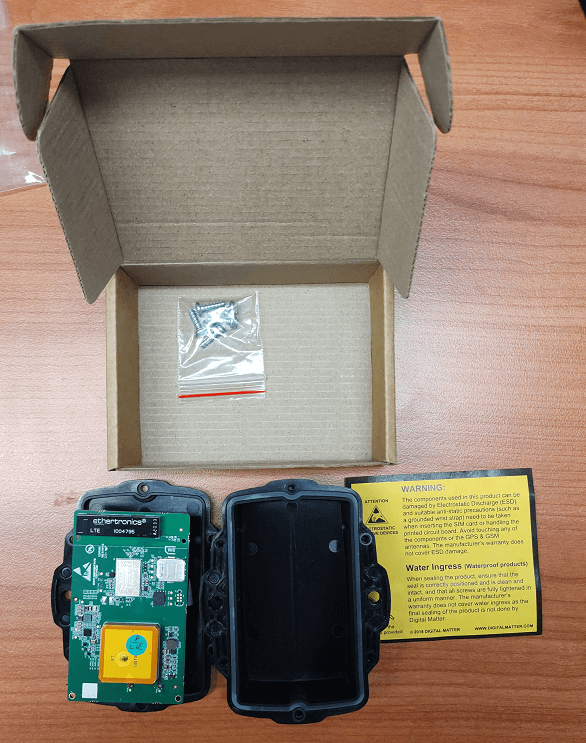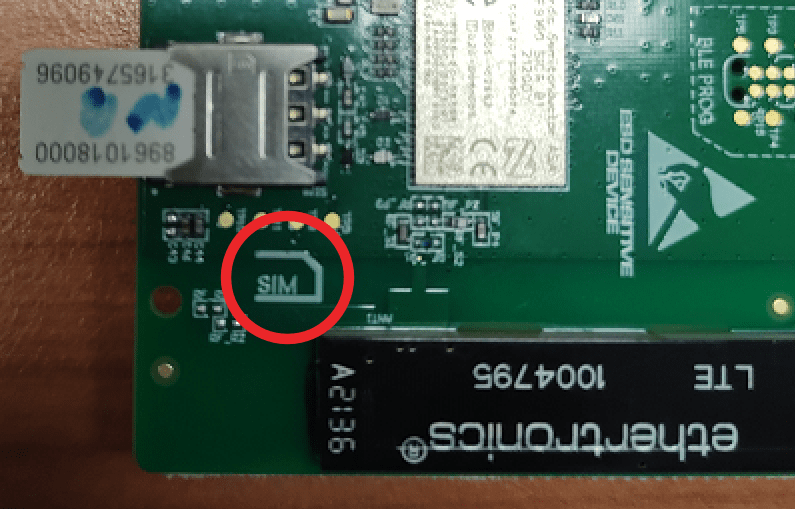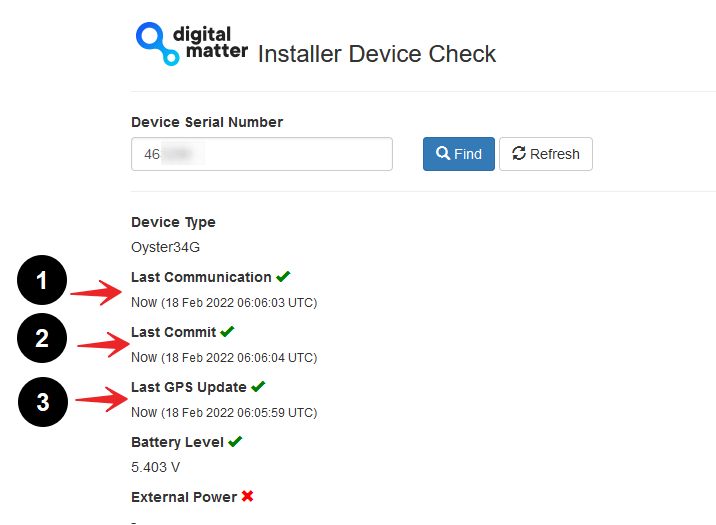Initial Provisioning [Oyster Edge]
Table of Contents
This guide is intended to assist new users in getting an Oyster Edge online for the first time. Once you have some experience with the device, this process may change slightly.
E.g you may wish to queue firmware and parameter updates before inserting a SIM and batteries - so that the device picks up new settings once it gets online.
In the Box
You will get a compact box containing the Oyster Edge. The 6 housing screws will be in a small packet inside the housing.
Screw Type: 3.5mm x 12mm - Pozi-Pan-Head Screws.

Provisioning Process
Electrostatic Discharge (ESD) Warning
The components used in the Oyster Edge can be damaged by Electrostatic Discharge (ESD). Suitable anti-static precautions (such as a grounded wrist strap) need to be taken when inserting the SIM card or handling the printed circuit board. Avoid touching any of the components or the GPS & GSM antennas. The manufacturer's warranty does not cover ESD damage.
1. Provision on Tracking Platform
While this is not specifically required to 'fire up' a device, it is generally helpful to do this step first as it will mean if all goes according to plan, we'll simply see our device appear online in this platform.
Telematics Guru users can follow the guide here Creating Assets in Telematics Guru
Special Connector Type
Device Data - 'raw' GNSS, WiFi and Cell Scan data - is sent to the The Location Engine to be resolved into positions. This requires a special connector type, different to our other devices.
- Telematics Guru users need to use the "Location Engine" version of their connector e.g. Location Engine -> TG (APAC 02) if your server is APAC 02
- For 3rd party platforms connectors can be created as shown - Forward Edge Device Data to my Endpoint (Cellular)
2. Insert SIM Card
The Oyster Edge uses a Nano (4FF) SIM Card.
The Oyster Edge operates on LTE-M or NB-IoT networks, and as such requires a specific SIM card from these networks.
Which SIM card to use?
For information on selecting a SIM card, see SIM Providers: LTE-M/Nb-IoT + Roaming, and Setup
Locate the silver SIM holder on the PCB. There is an image on the silkscreen which shows the SIM orientation
Slide the SIM into the holder with the keyed corner first and the SIM contacts orientated down to the main board.

3. Insert Batteries
Battery Selection
The Oyster Edge requires 3 x AA batteries. Selecting a suitable set of batteries is critical to the overall device performance.
For information on which batteries to select, see: Battery Recommendations.
Key Requirements:
- 3-5.5V Input Voltage Range
- LiFeS2 (i.e. Energizer Ultimate Lithium).
- Alkaline batteries will work but choose carefully - many alkaline batteries are of poor quality and do not last.
- Alkaline batteries will work but choose carefully - many alkaline batteries are of poor quality and do not last.
If in doubt, speak to our support team. Energizer Ultimate Lithium batteries are a great 'default' option for most use cases.
Insert the batteries, following the markings on the battery holder indicating the polarity. The leaft springs are the negative terminals.
4. Getting Online
Once the batteries are inserted, the internal LED will come on and flash. The device will do the following:
- The device will scan for GNSS and WiFi signals, and collect raw data. When it uploads it will also collect Cell Tower data and upload this data in addition.
- The raw data is sent to the Location Engine for processing.
- Processed data from Location Engine is sent to various location providers to resolve the raw data into a position.
- The resolved position is sent to the end server.
If the device does not complete these steps in 10 minutes, it will go to sleep and try again on the next heartbeat or the next trip start.
We are online!
Once these steps are completed, if all has gone to plan, we will be able to see the device on the map on our tracking platform.
The OEM Installer Page
Some users/installers may not have access to our end tracking platform, so the OEM Installer page can be used. It allows for a quick device check without giving away any sensitive information. It's also a handy tool for those with OEM/TG access
Go to www.oemserver.com/installer and search for the serial number to confirm that it has
- Connected
- Committed
- Location Updated

Troubleshooting
In the rare event the device does not connect, commit, or get a location update. Troubleshooting steps are detailed below.
Device does not connect
- Check the LED is flashing, if the LED is not flashing, either:
- The batteries inserted are dead. Test with a battery tester to check, or try a fresh set
- The device may have an issue, in which case contact DM for RMA information
- The device has not properly reset. Remove batteries for 20 seconds, and reinsert.
- Confirm your SIM card is active
- It is worth trying a SIM card from another connected DM device if possible (as that SIM is proven working)
- Try a fresh set of batteries (they may have enough power to flash the LED but not enough to upload data)
- If it is your first time using a new type of SIM or network, you may need to apply certain network settings with a DMLink Cable.
Device does not update location
If the device fails to update a location (the very first one can take a short while):
- Check that the lookup settings are correctly configured. See Location Engine Lookup Settings.
- Double check your Forwarder setup
- Remove batteries for 20 seconds, and reinsert. This restarts the device and it will attempt to scan for GNSS or Wi-Fi.
